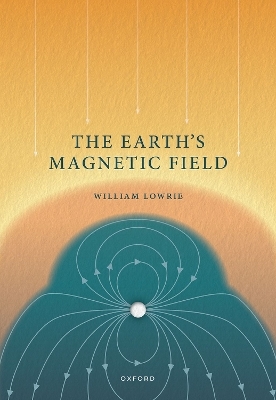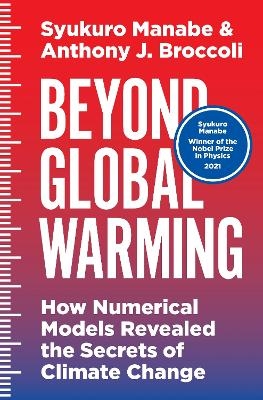
Flare Physics in Solar Activity Maximum 22
Springer Berlin (Verlag)
978-3-662-13840-3 (ISBN)
The book gives a survey of today's knowledge of the physical processes of solar flares. At the same time experiments on the satellite Solar A, which will be launched in 1991, are discussed. The book addresses astro- physicists and geophysicists.
General introduction.- In memoriam Katsuo Tanaka.- The sources of solar flares.- The Solar-A mission.- Soft X-ray telescope (SXT).- The Hard X-ray Telescope(HXT) on board SOLAR-A.- The Solar-A Bragg crystal spectrometer.- The wide band spectrometer on the Solar-A.- The SOLAR-A onboard Data Processor (DP).- Capabilities and limitations of Solar-A.- Optical observations of flare-productive flux emergence.- Flares appear on the red shift side near the inversion line of the H? Dopplergram.- Small scale active phenomena observed with DST and Huairou magnetogram.- Microflares observed in He I 10830 and their relation to the quiet sun magnetic fields.- HeI 10830Å observations of active regions.- Numerical simulations of ultraviolet and X-ray microflares.- Particle acceleration and the locations of hard X-ray sources.- The controversial relationship between hard X-ray and soft X-ray flares: Causal or non-causal?.- Magnetic morphology of nonthermal electron precipitation during three flares in a highly nonpotential active region.- The role of accelerated ions during the impulsive phase of flares and the production of hard X-rays.- Physical implications of X-ray imaging observations.- Studies of high-energy flare phenomena from simultaneous observations of gamma-rays and energetic particles.- Acceleration of high-energy nuclei as viewed from their chemical composition.- Heating and flows in flares.- Studies of helium-like ion spectra with the SMM flat crystal spectrometer.- X-ray spectra from Hinotori satellite and suprathermal electrons.- Quality improvement of solar flare temperature and density diagnostics derived from BCS spectra.- The beam driven chromospheric evaporation model of large solar flares: a model getting "no respect" from the sun.- Numerical simulations ofelectron-beam-heated solar flares.- A hydrodynamic thermal model of the impulsive phase of solar flares.- Material flow of a surge flare.- Evolution of hot plasma in flares.- The electron distribution and SXT images of a coronal soft X-ray source.- Interpretation of multi-channel X-ray intensities from solar flares.- Thermodynamic evolution of flares.- Simulation of SXT response to XSST soft X-ray spectrum.- Magnetic morphologies of solar flares.- Theoretical models of solar flares.- The practical application of the magnetic virial theorem.- Maximum energy of semi-infinite magnetic-field configurations.- High-energy particle acceleration during the implosion driven by 3-dimensional X-type current loop coalescence in solar flares.- On mechanisms of solar flares -some observational tests by using Solar-A.- Plasma waves caused by transient heat conduction in a coronal loop as a trigger for impulsive solar flares.- Magnetic structures in the corona.- Chromospheric and coronal activities in the quiet sun originating from photospheric 5-minute oscillations.- VLA supporting observations for SOLAR-A.- X-ray observations of global solar activity.- Coronal structures and the sunspot cycle.- Absorption of magnetoacoustic waves in the solar atmosphere with random inhomogeneities of density and magnetic fields.- SXT observations of MHD turbulence in active regions.- Simulated SXT observations of coronal loops.- Max '91/FLARES 22.- Studies of X-Ray flares by project CORONAS.- Solar energetic particle observation by GEOTAIL satellite.- Solar flare telescope and 10-cm new coronagraph.- The MSFC vector magnetograph, eruptive flares, and the Solar-A X-ray images.- Nobeyama radioheliograph.- Millimeter interferometric observations of solar flares during the Solar A mission.- Coronalrestructuring and coronal mass ejections as infrared from interplanetary magnetic flux ropes.- A proposal for a study of the solar wind near the sun by simultaneous observations with SOLAR-A and Kashima 34m antenna.- Search for transient coronal holes by SOLAR-A soft X-ray telescope.- Application of SOLAR-A SXT data to flare and geomagnetic storm forecasting research.
| Erscheint lt. Verlag | 23.8.2014 |
|---|---|
| Reihe/Serie | Lecture Notes in Physics |
| Zusatzinfo | X, 362 p. 143 illus. |
| Verlagsort | Berlin |
| Sprache | englisch |
| Maße | 170 x 244 mm |
| Gewicht | 647 g |
| Themenwelt | Naturwissenschaften ► Geowissenschaften ► Geophysik |
| Naturwissenschaften ► Physik / Astronomie ► Astronomie / Astrophysik | |
| Schlagworte | Astronomie • Astronomy • astrophysics • Astrophysik • atmosphärische Geophysik • atmospheric geophysics • Geophysics • Planet • Plasma physics • Raumphysik • solar physics • Solarphysik • solar wind • space physics • Sun • telescope |
| ISBN-10 | 3-662-13840-9 / 3662138409 |
| ISBN-13 | 978-3-662-13840-3 / 9783662138403 |
| Zustand | Neuware |
| Informationen gemäß Produktsicherheitsverordnung (GPSR) | |
| Haben Sie eine Frage zum Produkt? |
aus dem Bereich


